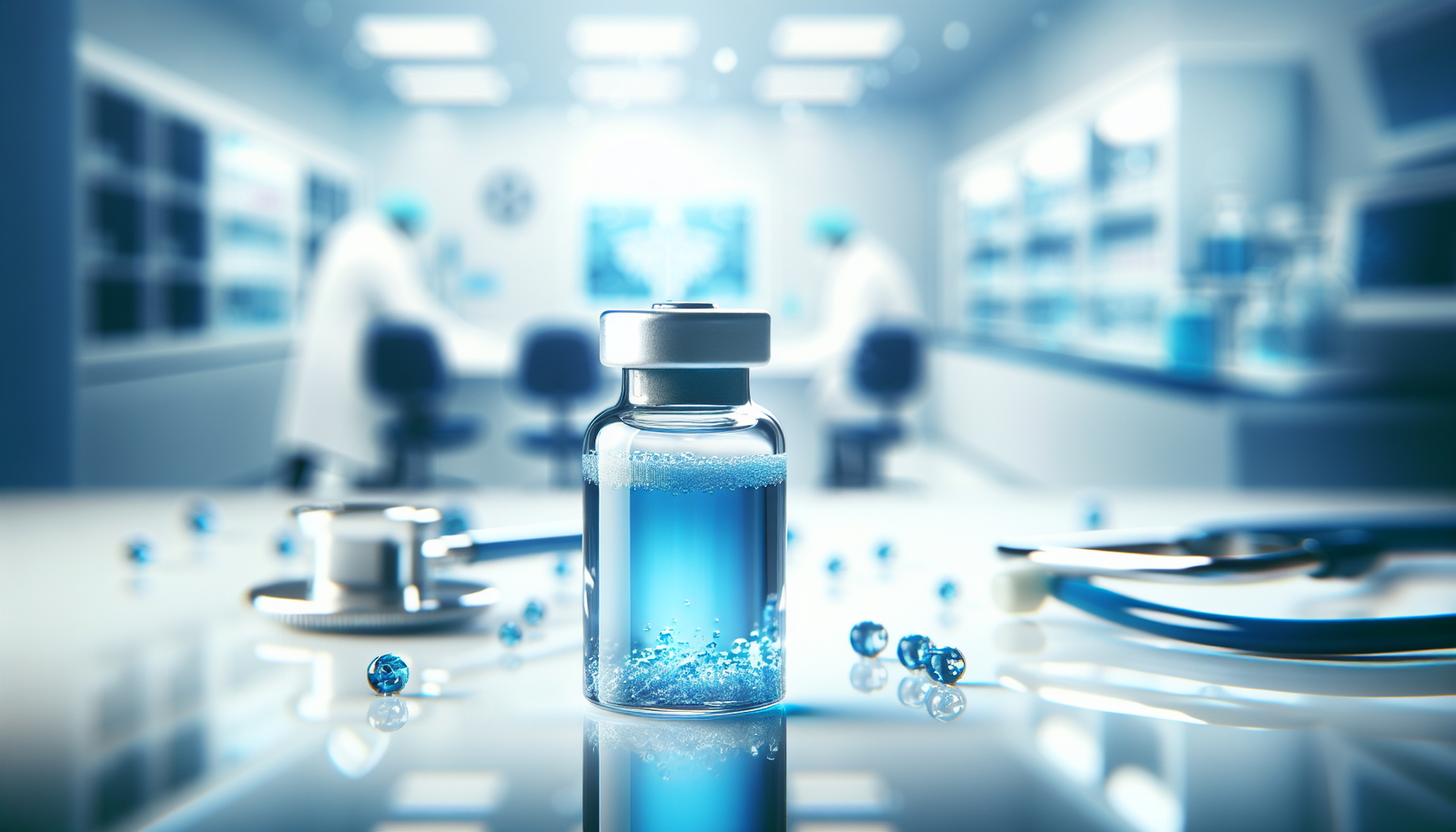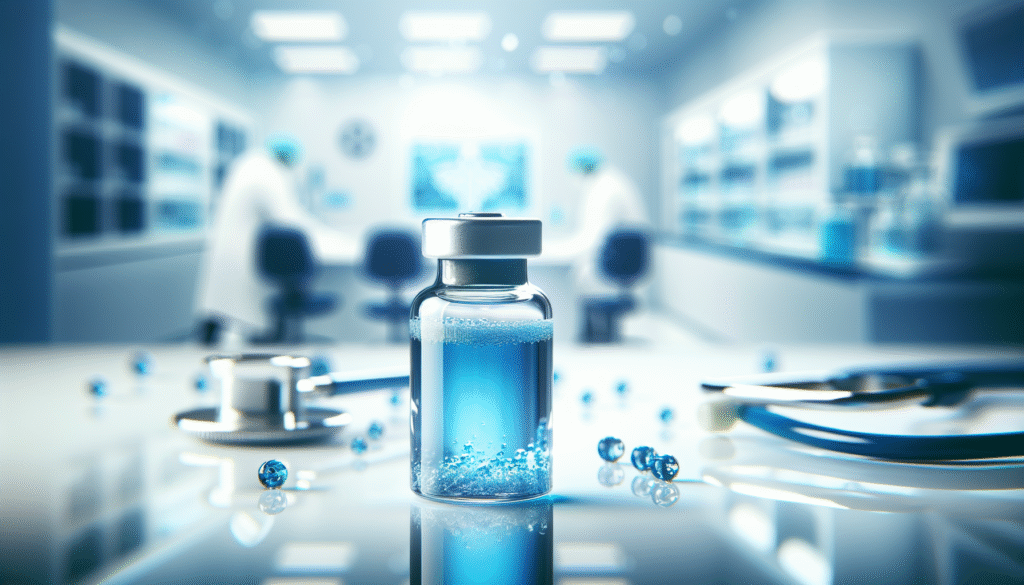
What role can a single compound play in modern medicine, and how can it benefit both healthcare professionals and patients alike? Methylene blue is one such compound with a fascinating history and a wide range of applications across various medical fields. This article delves into the most popular uses of methylene blue in contemporary medicine, highlighting its significance and potential in healthcare today.

A Brief Overview of Methylene Blue
Methylene blue, originally synthesized in the 1870s as a dye, has undergone extensive research and experimentation over the years. Its chemical name, methylthioninium chloride, reflects its dye origins, but its multifaceted applications extend far beyond that. Understanding its properties and versatility is crucial for grasping its role in modern medicine.
Originally employed for staining purposes in microbiology, methylene blue has made a remarkable transition into therapeutic uses. Its ability to interact with biological systems, combined with a relatively low toxicity profile, has made it a valuable asset in various medical scenarios.
Methylene Blue in Treating Methemoglobinemia
Understanding Methemoglobinemia
Methemoglobinemia is a medical condition characterized by an abnormal level of methemoglobin in the blood. Methemoglobin is a form of hemoglobin that has been oxidized and cannot effectively carry oxygen to the body’s tissues, leading to symptoms such as cyanosis, fatigue, and confusion.
The Role of Methylene Blue
One of the most established uses of methylene blue is as a treatment for methemoglobinemia. By reducing methemoglobin back to hemoglobin, methylene blue enhances the blood’s oxygen-carrying capacity. When administered intravenously, it can quickly alleviate the symptoms of this condition, making it a critical therapeutic agent in emergency situations.
Dosage and Administration: The typical dose for adult patients is 1-2 mg/kg, administered intravenously over five minutes. In severe cases, repeat doses may be necessary, underscoring methylene blue’s efficacy in acute treatment scenarios.
Clinical Significance
The rapid action of methylene blue in reversing methemoglobinemia has marked it as a go-to treatment option. Its effectiveness becomes particularly evident in cases caused by certain medications or exposure to chemicals, establishing it as a vital resource in emergency medicine.
Methylene Blue in Neuroprotection
Exploring Neuroprotective Properties
Neuroprotection refers to strategies that protect nerve cells against injury or degeneration. As neurodegenerative diseases become increasingly prevalent, the search for effective neuroprotective agents intensifies. Methylene blue’s potential as a neuroprotective agent has attracted considerable attention.
Mechanism of Action
Methylene blue is thought to enhance mitochondrial function and reduce oxidative stress in neural tissues. By promoting electron transport in mitochondria, it improves cellular respiration and promotes ATP synthesis, which is crucial for neuron survival and function. Additionally, its antioxidant properties help mitigate damage caused by free radicals.
Applications in Neurodegenerative Diseases
Research has shown promising results for the use of methylene blue in conditions such as Alzheimer’s disease and Parkinson’s disease. Clinical trials have indicated that it may slow cognitive decline and improve overall neurological function. Ongoing studies continue to explore its full potential in treating these debilitating disorders.
| Disease Type | Potential Benefits of Methylene Blue |
|---|---|
| Alzheimer’s | May slow cognitive decline and enhance memory function |
| Parkinson’s | Could improve motor function and decrease symptoms |
| Multiple Sclerosis | May offer neuroprotective benefits in pathology |
Methylene Blue in Cancer Treatment
Understanding the Oncological Context
Cancer treatment is multifaceted, driven by continuous innovation and research. While traditional therapies such as chemotherapy and radiation exist, adjunct treatments have gained traction. Methylene blue has emerged as a potential complementary agent in cancer therapy.
Mechanisms in Oncological Applications
Methylene blue’s anti-cancer properties primarily stem from its ability to induce apoptosis (programmed cell death) in cancer cells. It can alter mitochondrial function, leading to the release of pro-apoptotic factors that trigger cell death. Furthermore, its photodynamic properties allow it to be combined with light exposure to selectively target cancerous tissues.
Current Research and Applications
Ongoing studies are investigating the efficacy of methylene blue in various cancers, including breast, prostate, and colorectal cancer. Early-stage clinical trials have shown promise, suggesting that methylene blue can enhance the effectiveness of conventional therapies, reduce tumor growth, and minimize side effects.
| Cancer Type | Research Findings |
|---|---|
| Breast Cancer | Potential for reducing tumor size when combined with chemotherapy |
| Prostate Cancer | May improve treatment outcomes in combination with radiation therapy |
| Colorectal Cancer | Investigated for its ability to inhibit cancer cell proliferation |

Methylene Blue in Dermatology
Dermatological Applications
Methylene blue has found its way into dermatology, with applications primarily focused on its antiseptic and staining properties. Its effectiveness against certain pathogens makes it an intriguing choice for treating skin conditions.
Antiseptic Properties
The compound exhibits antimicrobial properties, providing a viable option for wound care and infection control. It is effective against gram-positive and gram-negative bacteria, making it a valuable tool in preventing infections in surgical settings.
Usage Guidelines: Methylene blue can be diluted for topical application or used in post-operative care to prevent infection in surgical sites.
Treatment of Skin Disorders
In addition to its antiseptic qualities, methylene blue is being investigated for the treatment of conditions such as acne and psoriasis. Initial studies suggest that it may help regulate immune responses, thereby reducing inflammation and lesions associated with these skin disorders.
Methylene Blue in Psychiatry
Exploring Psychiatric Applications
The intersection of chemistry and mental health has led to the exploration of various compounds as therapeutic agents in psychiatry. Methylene blue has piqued interest in this area due to its potential mood-stabilizing effects.
Mood Enhancement and Cognitive Function
Research suggests that methylene blue can enhance cognitive performance and reduce symptoms of anxiety and depression. Its antidepressant properties are believed to relate to its influence on mitochondrial function and neurotransmitter systems.
Future Directions in Psychiatric Treatment
As interest in alternative treatments for mental health disorders continues to grow, methylene blue offers a unique angle of exploration. Ongoing studies are assessing its potential to serve as an adjunct to traditional antidepressant therapies. While findings are preliminary, the implications could be transformative for patients seeking holistic approaches to mental wellness.
| Disorder | Potential Benefits of Methylene Blue |
|---|---|
| Depression | May enhance mood and cognitive function |
| Anxiety | Potentially reduces anxiety symptoms |
| Cognitive Decline | Investigated for its ability to improve cognitive performance |
Methylene Blue in Infection Control
The Role of Methylene Blue in Infectious Diseases
Methylene blue’s antimicrobial activity also extends to infectious diseases, where it may play a role in treatment strategies. As antibiotic resistance becomes an increasingly pressing concern, supplementary agents like methylene blue warrant attention.
Mechanisms of Action against Pathogens
Methylene blue’s photodynamic effects allow it to be activated by light, generating reactive oxygen species that can kill bacteria and viruses. This compound shows effectiveness against a range of pathogens, including those responsible for wound infections and hospital-acquired infections.
Clinical Implications
Research is ongoing to establish the clinical relevance of methylene blue in treating infections, particularly in the context of antibiotic-resistant strains. Early studies have indicated that it could serve as a valuable adjunct to traditional antimicrobial therapies, enhancing treatment outcomes while minimizing the risk of further resistance.
Safety and Side Effects of Methylene Blue
Understanding Safety Profiles
While methylene blue has a robust therapeutic profile, understanding its safety and possible adverse effects is essential. As with any medical intervention, weighing the benefits against potential risks allows healthcare professionals to make informed decisions.
Documented Side Effects
Some reported side effects of methylene blue administration may include:
- Headaches
- Nausea
- Dizziness
- Skin discoloration (temporary)
- Urine discoloration (turning blue or green)
Though generally regarded as safe, caution is advised in patients with certain health conditions, particularly those with glucose-6-phosphate dehydrogenase (G6PD) deficiency, where hemolytic anemia can occur.
Drug Interactions
Methylene blue has been shown to interact with various medications, including serotonin reuptake inhibitors (SSRIs) and certain anesthetics. These interactions may amplify side effects or lead to serotonin syndrome, emphasizing the necessity of thorough screening before administration.
The Future of Methylene Blue in Medicine
Research and Innovation
The journey of methylene blue in modern medicine is only beginning. Ongoing research continues to uncover new possibilities and applications for this remarkable compound. Key areas of focus may include its role in precision medicine, drug delivery systems, and personalized treatment approaches.
Global Implications
As global health challenges evolve, the versatility of methylene blue positions it as a critical tool for managing various conditions. Awareness among healthcare providers and ongoing clinical research will help facilitate its integration into treatment protocols, enhancing patient care across different medical disciplines.
Conclusion: Methylen Blue as an Essential Medical Compound
The myriad applications of methylene blue demonstrate its versatility and significance in the modern medical landscape. From treating methemoglobinemia to exploring its neuroprotective properties, oncology applications, and beyond, this compound continues to offer promising avenues for therapeutic advancement.
As you consider the implications of such a compound in your practice or daily health choices, remember that safe and informed usage can enhance its effectiveness and impact. With continued research and deeper understanding, the potential for methylene blue in medical treatment remains vast. Recognizing its historical significance while embracing future advancements may well pave the way for new therapeutic possibilities.